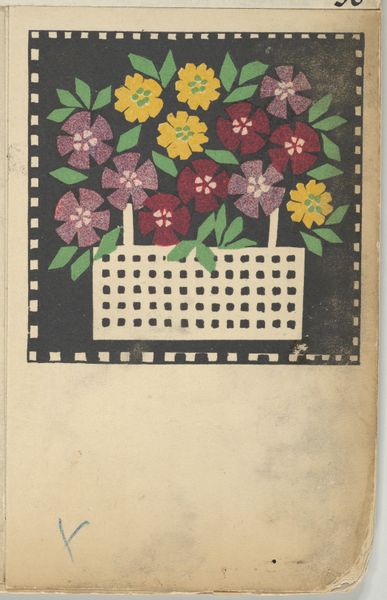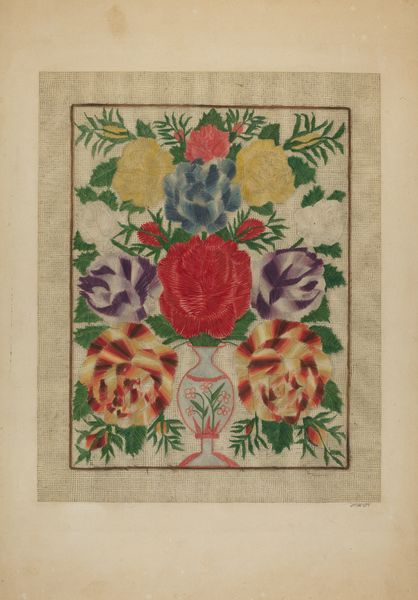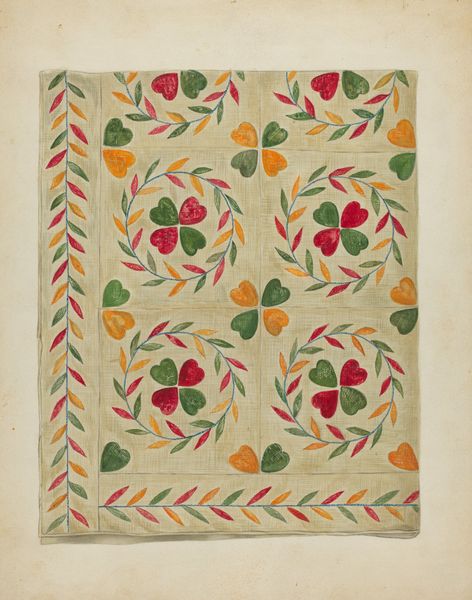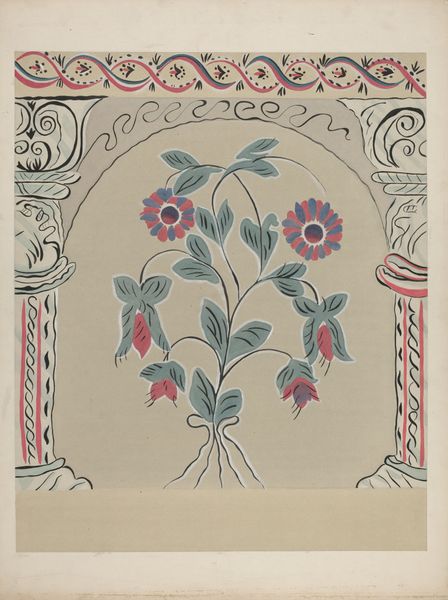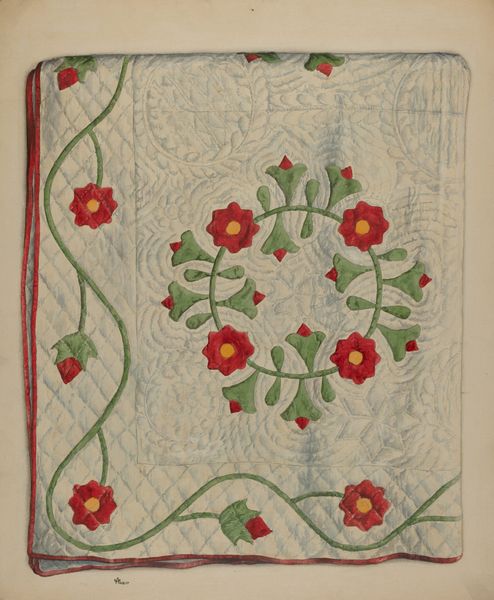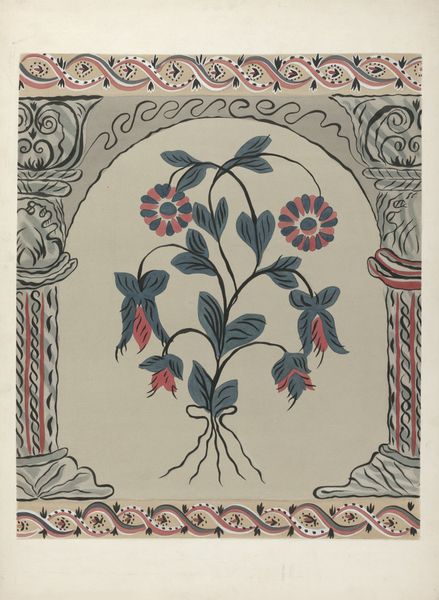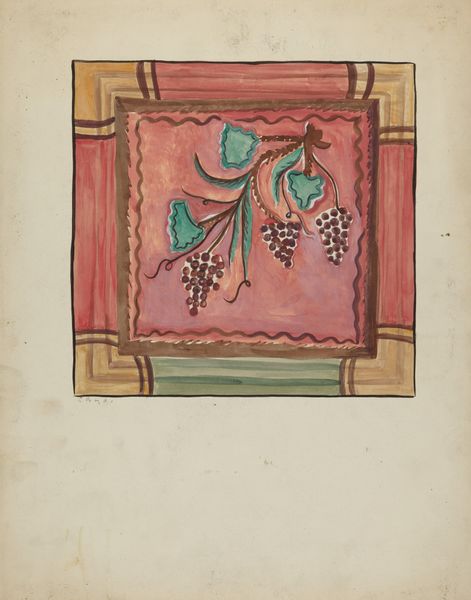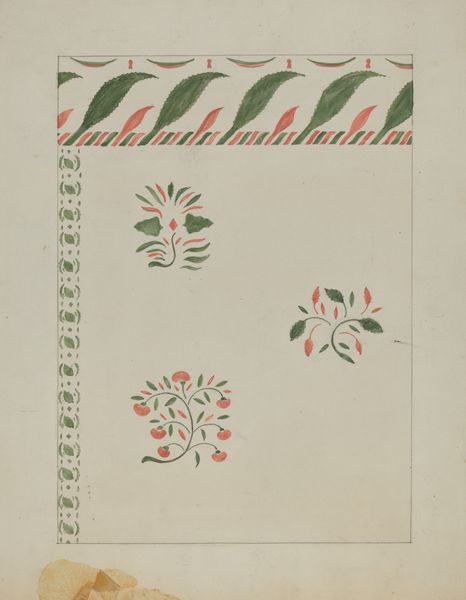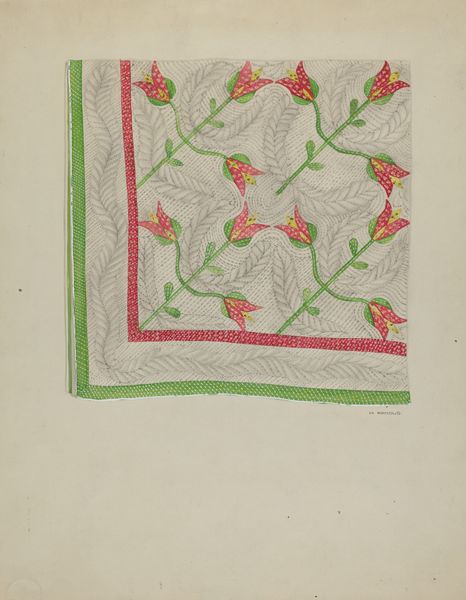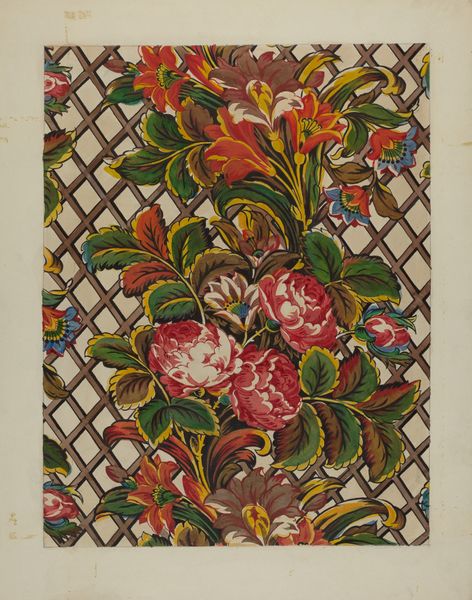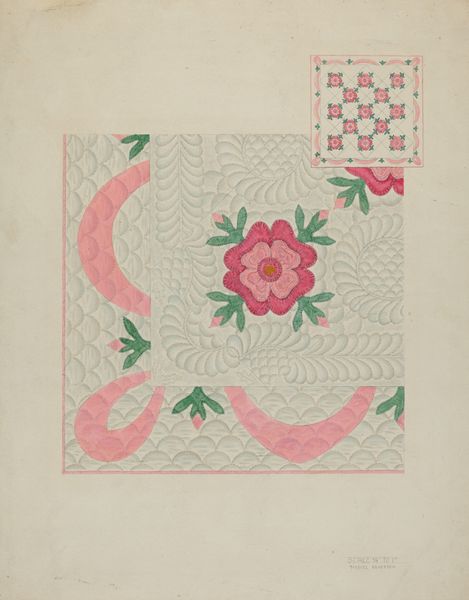
drawing, graphic-art, print, poster
#
drawing
#
graphic-art
#
art-nouveau
# print
#
geometric
#
symbolism
#
decorative-art
#
poster
Dimensions: image: 4 13/16 x 3 1/8 in. (12.2 x 8 cm) sheet: 5 9/16 x 3 9/16 in. (14.1 x 9 cm)
Copyright: Public Domain
Curator: Look at the work, butterflies flitting over fields of flowers. The Met is fortunate enough to hold Gustav Kalhammer's “Butterflies (Schmetterlinge),” created around 1907. It employs graphic art techniques; I'd even venture to call it a poster, representative of the Art Nouveau movement. Editor: My first impression is one of calm and constraint. It's almost oppressively decorative. The butterflies seem trapped within that elaborate floral and geometric border. Curator: Let's unpack the materiality. It’s a print, likely produced in multiples, intended for distribution and, I suspect, consumption. Notice the deliberate choice of medium. This wouldn't have been seen as high art but as commercial art, affordable, and accessible. Editor: That dark blue ground does conjure a twilight space, doesn't it? Butterflies have long been associated with metamorphosis and the soul. Are they longing to escape the heavy-handed order of the flowers, or is that geometric frame perhaps suggesting an altar? A space for honoring their ephemeral existence? Curator: Interesting point. And I see that frame almost like a cage. That geometric patterning suggests repetitive labor in the design and printing processes, an industrialized take on organic motifs. The social context demands we ask: for whom was this designed? And what were they being encouraged to consume, beyond the art itself? Editor: Considering it's Art Nouveau, one could suggest an undercurrent of Symbolism, and therefore escapism. I feel those stylized roses and hovering insects may have invited its original audience to dream. Did they perceive themselves similarly trapped by the burgeoning urban life back in the day, longing for the freedom of the countryside? Curator: So, what was first presented as merely a tranquil composition holds within it the story of production, consumerism, and the artistic conventions surrounding what art actually is and for whom. Editor: Precisely. And by following those fragile butterflies and their red floral guardians, we arrive at cultural memories, those intangible threads between ourselves and society a hundred years gone.
Comments
No comments
Be the first to comment and join the conversation on the ultimate creative platform.
